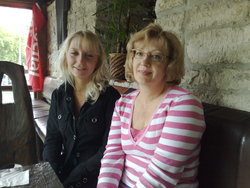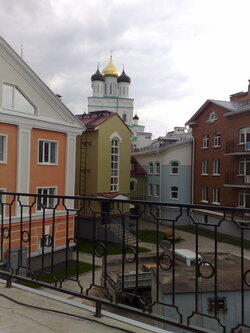Pskov - A city in transition
The city has recently celebrated city days with international participation and bands even from Sweden and USA were playing there.
It’s interesting to see that Pskov is a city in rapid change and several real estate projects are coming up both in the suburbs and in the very city center. One rather controversial project is almost finished close to the walls of Kremlin, too close and too colorful according to the critics. The new buildings located at the banks of the Pskov river contain dwelling apartments, shops and offices. The attached pictures show the new area.
A major challenge for tourism and international cooperation is still the language barrier. For me as a non very good Russian speaker (modestly speaking) there are still some challenges. But maybe that’s also what’s fascinating: Russia is “another world”. Anyhow some more info, menus and boards at English would make life a bit easier for visitors in Pskov. And service level is "interesting" in some places.
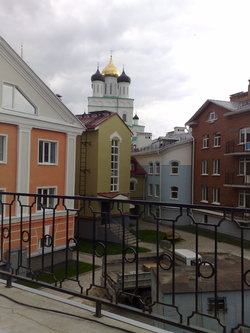
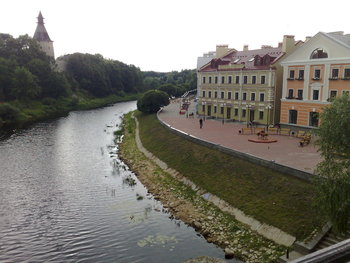
IC network in Russia
The Fund "Pskov oblast agency for regional development" signed up for IC network membership. The same did “Russian International Academy for tourism, Pskov branch”. I had the pleasure of sharing time with Director Nikolai Shateshilov, Director Olga Kozyreva and Anna Bogdanova who now started to work for Pskov Regional Tourism Department.
The next step is to build out the network within Pskov. Also other cities like Murmansk and Severodvinsk should be actively connected to the network as they already have been active in the previous projects and events. Other cities can join step by step.
For this purpose I have decided to engage some young activists (“IC and PIPE alumni”) to help us binding the network together. We also need to call on the “silver army” from the previous projects. We need both senior experience and young enthusiasm.
The Baltic Sea Region - History and culture
I also visited the Pechory monastery close to the Estonian border and was introduced to the very exciting history by my guide Anastasia Nikandrova. The monastery was founded by presbytarian monks in the 15
th century. The cave church was the beginning. Battles have been fought against Livonian and Swedes and during a period of time the monastery belonged to Estonia. A range of Russian emperors and presidents have visited the monastery which has played an important role in Russian history. It’s well kept and a very impressive treasure.
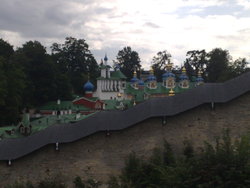



I also visited Pskov archeological center and had talks with Ms. Elena Yakovleva who quite recently found new traces of Scandinavian heritage in Pskov. A noblelady from Scandinavia was recently excavated at a location in what today is the commercial center of Pskov. Jewelry and other items proved her to be from a rich family, maybe Norway or Sweden. The archeological center has also a lot of other items from excavations showing the connections to Scandinavia during the Viking period. They wish to present and publish material and they invite Scandinavians who are interested in common history to establish cooperation. “Olga from Pskov” was probably originally named “Helga”, a Scandinavian name. She married King Konstantin, was babtised in Konstantinopel and became the widow ruler of the Kiev empire.
Being there I was suddenly thinking about “Saint Olav” and his men who were staying at King Jaroslav of Novgorod(“Holmgard” in Norwegian language) the 2 years before his big final battle. No wonder if there are traces from Scandinavia in the Pskov/Novgorod districts. When Queen Ingerd of Russia, Olav’s once bride-to-be, met the ex-king of Norway, she found him a very depressed man and was not at all impressed by him. To cheer him up King Jaroslav suggested Olav rule the Bulgars for him. Olav declined. For a time he had plans to go to Jerusalem as a pilgrim and join a monastery as a monk. Then with help of Jaroslav he returned to Norway. The legendary Norwegian King was killed at Stiklestad near Trondheim 29th July 1030 in an attempt to regain his kingdom and to introduce Christianity in Norway. He was influenced by new ideas, Christianity and Russian culture and he challenged King Knut of Denmark and some mighty earls in Norway. He lost the battle and his life but he managed to impact the people so Christianity finally was prevailing in Norway. People claimed that he was a “holy” man because miracles started to happen and his hairs and nails were growing even years after his death. “Saint Olav” is painted at several icon paintings around in Europe and is a “saint” both among catholic and orthodox as he was living before the big separation.

New projects-new activities
There is a good reason to believe that projects, tourism and events can be developed on the background of the common heritage between Russia, Baltics and Scandinavia. We were talking about the possibilities of language training, exchange of experts, history research project, new tourism products etc.
Pskov is a city and region which is developing. The IC project contributed with some novel ideas and food pieces of advice. It's a pleasure to follow the further development of the city and region closely.


